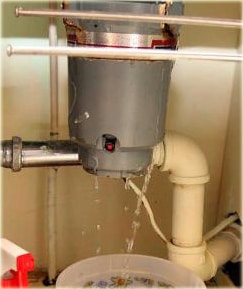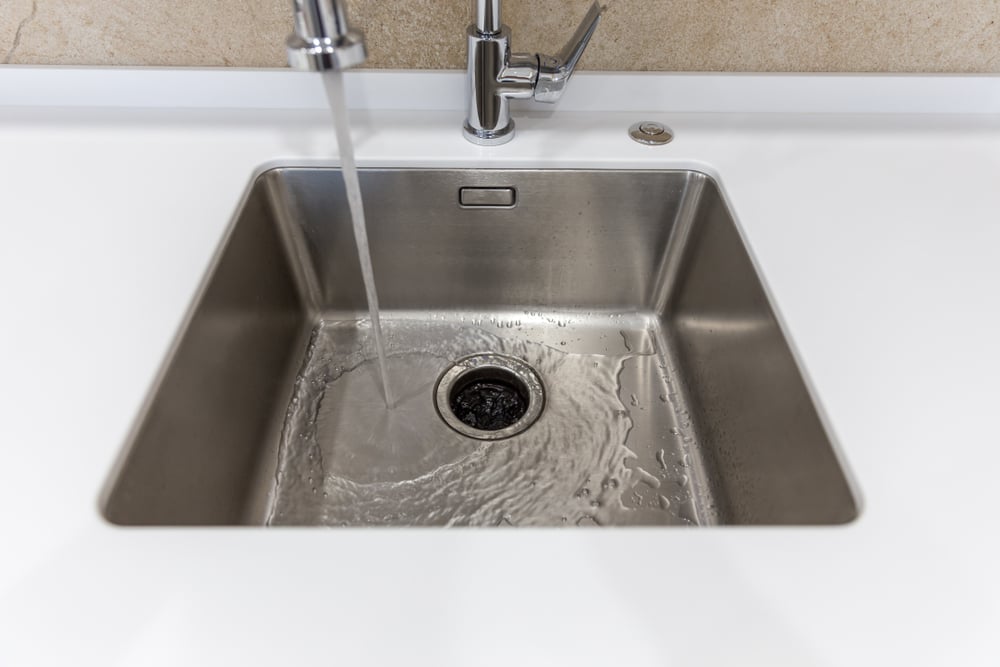Proven Solutions for Fixing a Dripping Garbage Disposal
Proven Solutions for Fixing a Dripping Garbage Disposal
Blog Article
On this page below you will find more dependable points pertaining to Tips on Fixing a Leaking Garbage Disposal.

Waste disposal unit are necessary kitchen area home appliances that assist in taking care of food waste effectively. Nonetheless, a leaking waste disposal unit can be a discouraging and untidy issue to handle. Luckily, numerous leakages can be dealt with quickly with a few easy steps. In this write-up, we will certainly discuss how to deal with a leaking waste disposal unit efficiently.
Intro
Waste disposal unit are installed under cooking area sinks and are developed to shred food waste right into smaller sized pieces, enabling it to travel through the pipes system easily. While these gadgets are usually reputable, leakages can take place over time due to deterioration, loose connections, or damage to the system.
Common Sources Of Leakages in Waste Disposals
Worn Seals and Gaskets
Seals and gaskets play an essential function in stopping water from dripping out of the garbage disposal. Over time, these components can deteriorate, leading to leaks around the disposal system.
Loose Connections
The connections in between the waste disposal unit and the plumbing system can come to be loosened with time, creating water to leak out during operation.
Cracks or Openings in the Disposal Device
Physical damages to the garbage disposal, such as cracks or holes in the housing, can also result in leaks.
Determining the Source of the Leak
Before trying to take care of a dripping waste disposal unit, it is vital to recognize the resource of the leakage. This can typically be done via aesthetic examination or by performing simple examinations.
Visual Assessment
Examine the waste disposal unit system very carefully for any signs of water leakage. Pay close attention to areas around seals, gaskets, and connection points.
Evaluating for Leaks
One means to examine for leakages is by running water with the disposal unit and checking for any visible signs of leakage.
Devices and Materials Needed for Dealing With a Dripping Garbage Disposal
Prior to starting the repair work process, collect the needed devices and materials, consisting of a screwdriver, adjustable wrench, plumber's putty, replacement seals or gaskets, and epoxy or patching material for repairing splits or openings.
Step-by-Step Overview to Repairing a Leaking Waste Disposal Unit
Switch off the Power
Before trying any repair services, guarantee that the power to the waste disposal unit unit is turned off to stop the threat of electric shock.
Situate the Leakage
Recognize the precise place of the leak and determine the reason.
Tighten up Connections
Use a wrench to tighten up any loosened links between the disposal system and the plumbing system.
Change Seals or Gaskets
If the leakage results from used seals or gaskets, get rid of the old parts and change them with new ones.
Patching Cracks or Openings
For cracks or openings in the disposal unit, use epoxy or an ideal patching product to seal the broken area.
Examining the Garbage Disposal After Fixing
As soon as the repair work is full, check the garbage disposal by running water with it to make certain that the leakage has been resolved.
Preventive Maintenance Tips to Avoid Future Leaks
To prevent future leaks, it is vital to carry out routine maintenance on your waste disposal unit. This consists of maintaining it clean, avoiding placing non-food items or difficult items down the disposal, and regularly checking for leaks or other concerns.
Final thought
In conclusion, taking care of a dripping garbage disposal is a reasonably simple procedure that can be completed with basic tools and materials. By complying with the actions laid out in this article and practicing preventative upkeep, you can maintain your waste disposal unit in good working problem and stay clear of pricey repairs in the future.
HERE’S HOW TO FIX YOUR GARBAGE DISPOSAL
WHAT TO DO IF SOMETHING IS STUCK IN YOUR GARBAGE DISPOSAL
If the impeller won’t turn, there’s probably something stuck in the disposal. It could be a steak bone or peach pit, although plumbers report pulling all sorts of inappropriate objects out of disposals, such as bottle caps or aluminum foil. Make sure power to the disposal is off, and look inside to see if you can see the source of the jam.
Never stick your fingers in a disposal. Pull out anything you see with tongs or pliers.
If the disposal still won’t work, it may be time to call a plumber or consider buying a new disposal. GEM Plumbing & Heating is here for all of your garbage disposal needs.
WHAT TO DO IF YOUR GARBAGE DISPOSAL DRAIN IS CLOGGED
Take everything out from underneath your sink and put a bucket or other container under your disposal to catch any water that drains out. Disconnect your disposal from the power supply. If it’s plugged into a wall outlet, unplug it. If it’s hardwired into an electrical box, go to the electrical panel and turn off the breaker for the disposal. Pour ¼ cup of baking soda into the drain, followed by ½ cup of white vinegar. Give the solution a few minutes to fizz and do its work. Look into the disposal with a flashlight to see if you can see an object that might be causing the clog. If you see it, remove it using tongs or pliers. MORE TIPS ON DEALING WITH A CLOGGED GARBAGE DISPOSAL
Never use drain cleaner in a garbage disposal. It can damage the plastic parts inside the disposal. You can also be splashed with the caustic liquid while working to clear the clog. Beware! Never stick your fingers into a garbage disposal. Trust us — not a good idea. In many instances, your dishwasher drains through your garbage disposal. This allows the disposal to grind any large food particles that may be drained out of your dishwasher. There are some jurisdictions, however, where the plumbing code prohibits such a connection. WHAT TO DO WHEN YOUR DISHWASHER DRAINS THROUGH THE DISPOSAL
Run some water in the sink so your plunger has at least a ½-inch of water to create a seal and plunge vigorously up and down several times. You may need to repeat this several times. Run hot water down the drain to clear any residue that remains.

Do you like reading up on Why Is ? Leave a short review below. We would be delighted to hear your opinion about this blog. We are looking forward that you visit us again in the future. You should set aside a second to promote this blog posting if you enjoyed reading it. Thanks a lot for your time. Visit us again soon.
Course Detail Report this page